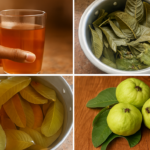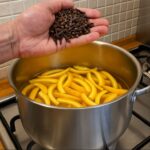The world of cheese homemade is a captivating realm where culinary mastery meets creativity and tradition. Making cheese at home isn’t simply about feeding yourself; it’s an enriching experience that connects you with the ingredients, the process, and perhaps even the generations before you who crafted their own dairy delights. As we journey through the art and science of homemade cheese, we discover not just how to create delectable varieties but also how to embrace sustainability and foster community around shared culinary experiences.
Introduction to Homemade Cheese
Embarking on the adventure of homemade cheese offers a unique blend of flavor exploration, creativity, and the satisfaction of crafting something from scratch. This hands-on approach allows enthusiasts to delve into the history of cheese-making while enjoying the delightful rewards of their efforts.

The Allure of Crafting Cheese at Home
The enchantment of creating cheese in your kitchen lies in its simplicity. With just a few ingredients, anyone from novice cooks to experienced chefs can transform ordinary milk into sumptuous delicacies. Each step of the process offers an opportunity for learning and experimentation, encouraging a sense of accomplishment every time you produce a new batch.
Homemade cheese invites you into a world where the possibilities are endless. Whether it’s the creamy richness of ricotta or the stretchy goodness of fresh mozzarella, each cheese presents its own character and charm. It’s a culinary journey that speaks to both the heart and the palate, allowing you to explore flavors that commercial options may lack.
A Brief History of Cheese Making
Cheese making is an ancient craft, dating back thousands of years. The earliest records show that humans began converting milk into cheese as a way to preserve its nutrients and extend its shelf life. Ancient civilizations understood the transformative magic of fermentation, using natural techniques to create various types of cheeses.
Throughout history, cheese has evolved alongside cultures, with regional variations reflecting the local landscapes and traditions. From the crumbly feta of Greece to the robust cheddar of England, each cheese tells a story of its origins. Understanding this rich heritage enhances the appreciation of the cheeses you make at home, connecting you to a global tapestry of culinary artistry.
Essential Ingredients for Cheese Making
To embark on the journey of creating cheese at home, it’s essential to gather a few key ingredients that serve as the foundation of your flavor-packed masterpieces.
The Role of Milk in Cheese Production
Milk is the primary ingredient in cheese production and serves as the canvas upon which you will create your edible artwork. The type of milk you choose—be it cow, goat, or sheep—will significantly influence the flavor, texture, and overall character of the cheese. For instance, cow’s milk tends to yield a creamier texture, while goat’s milk offers a tangy profile that’s perfect for fresh cheeses.
When selecting your milk, pay attention to its freshness and quality. Using raw, unpasteurized milk can enhance the complexity of flavors, while pasteurized milk provides safety and consistency. Regardless of your choice, understanding the properties of your milk is crucial for achieving successful curd formation and desired outcomes in your cheese-making adventures.
Acidifiers: Lemon Juice, Vinegar, and More
Acidifiers play a pivotal role in cheese making, helping to coagulate the milk and form curds. Common acidifiers include lemon juice, vinegar, and citric acid, each imparting its distinctive character to the cheese being produced. For example, lemon juice adds a bright, zesty note to ricotta, while vinegar contributes a milder flavor that works well in softer cheeses.
Experimenting with different acidifying agents allows you to customize the taste and aroma of your cheeses. By understanding how different acids interact with milk proteins, you will be better equipped to manipulate the final product to suit your preferences. This scientific approach can lead to delightful surprises as you uncover new flavor profiles with each batch.
Salts and Their Influence on Flavor and Texture
Salt is another crucial ingredient in cheese making, influencing both flavor and texture significantly. It enhances the overall taste while acting as a preservative to prevent spoilage. The choice of salt—from kosher to sea salt—can subtly alter the flavor profile and mouthfeel of the final product.
Moreover, salting can be done at various stages in the cheese-making process, impacting the moisture content and rind development. Understanding when and how to incorporate salt will empower you to create cheeses with distinct characteristics, providing you with the tools necessary to personalize your creations further.
Necessary Equipment for Cheese Making
Setting up your home cheese-making station requires a few essential tools and equipment. While some might think that advanced gear is needed, many beginners can start their cheese-making journeys with basic items found in most kitchens.
Basic Tools for Beginners
For those newly venturing into cheese making, a simple set of tools will suffice. A large pot to heat the milk is vital, as well as a thermometer to monitor temperature accurately. A slotted spoon is handy for stirring and lifting curds, while a fine-mesh strainer or cheesecloth is essential for separating curds from whey.

Having these basic tools will enable you to follow beginner recipes with ease. Over time, as your skills progress and your confidence grows, you can consider investing in more specialized cheese-making equipment like a cheese mold or press. Starting simple allows you to become comfortable with the process before diving deeper into the art of cheesemaking.
Advanced Equipment for the Aspiring Cheesemaker
Once you’ve mastered the basics, you may find yourself drawn to more advanced techniques and equipment. A cheese press allows you to shape your cheeses more effectively, offering greater control over moisture levels and texture. A pH meter can help you monitor acidity, ensuring that you’re on track for optimal curd formation.
Investing in these tools can elevate your cheese-making game, giving you the ability to experiment with different styles of cheese and refine your craft. As you continue to learn and grow, having the right equipment will facilitate your creative endeavors and deepen your connection to the art of cheese making.
Fundamental Techniques in Cheese Making
Understanding the fundamental techniques involved in cheese making is essential for transforming your ingredients into delicious results. These steps mirror the artistry of creating music, where each action contributes to a harmonious outcome.
Understanding Curd Formation
Curd formation is the magical moment when milk transforms into solid masses, thanks to the addition of acidifiers and rennet. This critical stage begins with the milk being heated and then acidified, leading to the coagulation of proteins. As curds begin to form, the texture and consistency depend on several factors, including temperature, acidity, and the specific recipe being followed.
Monitoring the curd formation process closely grants you the ability to manipulate your cheese’s final characteristics. Different recipes may call for varying degrees of firmness, so it’s essential to understand how each adjustment influences the overall result. The satisfaction of witnessing the transformation unfold before your eyes is truly unmatched, marking the beginning of your artisanal journey.
The Process of Cutting and Cooking Curds
Once your curds have formed, the next step is cutting them into smaller pieces. This technique releases whey, affecting the final texture of the cheese. For firmer cheeses, curds may be cut into small cubes, while for softer varieties, larger curds can retain more moisture.
After cutting, cooking the curds is another critical process. By gently heating the curds, you encourage further whey loss and achieve the desired texture. The temperature and duration of cooking directly influence the finished product, so careful monitoring is essential. Understanding these techniques empowers you to create a wide range of cheese styles and textures, expanding your knowledge and refining your skillset.
The Importance of Temperature Control
Temperature is a vital element in cheese making, influencing every stage of the process. From heating the milk to cooking the curds, maintaining precise temperatures ensures that the enzymes and bacteria work harmoniously to produce high-quality cheese.

Investing in a reliable thermometer will provide you with accurate readings, allowing you to adjust your methods as needed. Whether you’re aiming for a delicate ricotta or a robust cheddar, mastering temperature control will enable you to navigate the intricacies of cheese making with confidence. The knowledge gained from understanding temperature dynamics will serve you well as you experiment with various recipes and styles.
Popular Cheese Varieties to Try at Home
Once you’ve grasped the fundamentals, you’ll likely feel inspired to explore a variety of cheese styles. Each type offers unique characteristics, flavors, and challenges, enriching your cheese-making experience.
Fresh Cheeses: Ricotta and Queso Fresco
Fresh cheeses are often the starting point for many aspiring cheesemakers, showcasing simplicity and immediate gratification. Ricotta, known for its creamy texture and mild flavor, requires minimal ingredients and offers versatility in both sweet and savory dishes. With just milk, an acidifier, and a pinch of salt, you’re on your way to crafting a delightful cheese that elevates countless recipes.
Queso fresco, a traditional Mexican cheese, is equally rewarding. Its crumbly texture and slightly tangy flavor make it perfect for topping salads, tacos, or enchiladas. Plus, the quick turnaround time means you can enjoy your homemade creation shortly after you begin. Both fresh cheeses are perfect for honing your skills while indulging in delicious outcomes.
Semi-Hard Cheeses: Mozzarella and Provolone
Once you’re familiar with fresh cheeses, semi-hard varieties like mozzarella and provolone beckon you to take your cheese-making journey further. Fresh mozzarella, with its beloved stretchiness and mild flavor, can be made using simple techniques involving curd stretching. The mouthwatering experience of pulling apart freshly made mozzarella is unparalleled and makes for an exciting project.
Provolone, on the other hand, requires slightly more time and attention. This aged Italian cheese showcases complex flavors that develop through the use of specific bacterial cultures and aging conditions. Mastering the art of semi-hard cheeses opens doors to new culinary experiences, enhancing your repertoire and impressing your friends and family with your artisanal talents.
Aged Cheeses: Cheddar and Gouda
Aged cheeses such as cheddar and gouda represent a thrilling challenge for the seasoned cheesemaker. Cheddar, with its rich flavor and crumbly texture, requires careful curd handling, pressing, and aging. As the cheese matures, it develops distinctive notes and aromas, resulting in a complex flavor profile that evolves over time.

Similarly, gouda offers a sweet, nutty flavor complemented by its smooth texture. The aging process for gouda involves specific humidity and temperature requirements, allowing you to experiment with various aging times and techniques. Creating these aged cheeses is a labor of love, but the rewards are worth the effort, providing a satisfying culmination of your cheese-making journey.
Experimenting with Flavors
One of the most exciting aspects of cheese making is the ability to experiment and infuse your cheeses with unique flavors. This creative outlet allows for personalization and adaptation, catering to individual tastes and preferences.
Infusing Herbs and Spices into Cheese
Elevating your homemade cheese with herbs and spices can transport your creations to new heights. Fresh herbs like basil, thyme, or oregano can bring a delightful burst of flavor, while spices such as paprika or black pepper add depth to your cheese’s profile.

Incorporating these ingredients during the curd-making process ensures that the flavors meld seamlessly, creating a cohesive experience. Imagine the satisfaction of serving a herbed ricotta spread on crusty bread or offering guests a spiced cheddar that tantalizes their taste buds. Experimenting with flavors is not only enjoyable but allows you to express your culinary identity.
Incorporating Fruits and Nuts
Fruits and nuts can also lend wonderful textures and flavors to your cheeses. Dried fruits like cranberries or apricots add sweetness, while nuts provide crunch and richness. Using these additions during the mixing stage of curds can yield delightful results, allowing you to create cheeses that surprise and delight.
Consider crafting a soft cheese mixed with crushed walnuts and honey or a sharp cheddar studded with dried figs. These combinations invite exploration and inspire innovative pairings with wines and accompaniments, taking your cheese-making game to the next level.
Adapting Recipes for Dietary Needs
As awareness surrounding dietary restrictions grows, adapting cheese recipes to accommodate various needs is an important consideration. Whether you’re creating lactose-free cheeses or experimenting with plant-based alternatives, there are numerous avenues to explore.
Using cashews, almonds, or soy milk as bases can yield impressive vegan cheeses that mimic traditional flavors and textures. Additionally, exploring recipes tailored for specific diets (such as keto or paleo) allows you to share your creations with a broader audience. Adapting recipes fosters inclusivity, ensuring everyone can savor the joys of homemade cheese.
Sustainability in Homemade Cheese Making
Creating cheese at home isn’t just a culinary endeavor; it also connects you to broader themes of sustainability and responsible consumption. As you explore this art form, consider how your choices impact the environment and the food system.
Sourcing Local Ingredients
One of the most effective ways to embrace sustainability in cheese making is by sourcing local ingredients. Finding nearby dairy farms or artisanal producers allows you to access high-quality milk while supporting your local economy. Moreover, using seasonal ingredients encourages mindful consumption and reduces your carbon footprint.
By choosing local, organic milk, you gain transparency regarding your food sources, fostering a deeper connection to your culinary practices. Embracing this philosophy aligns with a growing movement toward sustainability, encouraging other home cooks to join in the effort for responsible food choices.
The Environmental Impact of DIY Cheese
The environmental benefits of making cheese at home extend beyond ingredient sourcing. By opting for homemade over store-bought options, you reduce reliance on industrial processes that often prioritize efficiency over quality. Industrial cheese production typically generates significant waste and relies on non-sustainable practices, contributing to environmental degradation.
Engaging in DIY cheese making enables you to minimize packaging waste associated with commercial products. By reusing containers and adopting sustainable practices in your kitchen, you can contribute positively to the environment while enjoying the personal satisfaction of crafting your culinary delights.
Community and Connection through Cheese
Homemade cheese transcends the solitary act of cooking; it fosters connections between people and creates opportunities for shared experiences. Gathering around cheese brings a sense of camaraderie and joy that enriches our lives.
Hosting Cheese Tasting Events
One of the best ways to celebrate your cheese-making achievements is by hosting a cheese tasting event. Inviting friends and family to partake in your creations encourages collaboration and conversation, creating a festive atmosphere centered around culinary exploration.
Pairing your cheeses with complementary fruits, nuts, and beverages allows guests to indulge in unique flavor combinations. Furthermore, sharing stories behind each cheese sparks discussions, deepening connections and celebrating diversity in culinary experiences. Your homemade cheeses become a centerpiece for unity and celebration.
Sharing Your Creations with Friends and Family
Sharing your cheese-making journey extends beyond formal events; it encompasses the everyday moments that bring people together. Offering friends a taste of your latest creation or bringing a selection of cheeses to a gathering creates an opportunity to connect and bond over food.
These shared experiences not only showcase your craftsmanship but also build lasting memories and relationships. In a fast-paced world, these simple acts of generosity remind us of the importance of community and the joy of breaking bread (or cheese) together.
Troubleshooting Common Cheese-Making Issues
Even the most seasoned cheesemakers encounter challenges in their pursuit of perfection. Learning how to troubleshoot common issues can empower you to overcome obstacles and refine your craft.
Fixing Curdling Problems
Curdling problems can arise due to various factors, including improper temperature control, insufficient acidification, or even the use of expired ingredients. If your curds fail to form properly, retracing your steps and checking each element can help determine the cause.
Adjusting the temperature or adding a bit more acidifier can rectify curdling issues. Emphasizing patience and observation while troubleshooting helps you develop a keen sense of awareness that will serve you well throughout your cheese-making journey.
Addressing Flavor Imbalances
Occasionally, you may find that your homemade cheese lacks balance in flavor or texture. This can happen for several reasons, such as incorrect ratios of ingredients or improper aging conditions.
If a cheese turns out too salty, consider adjusting your salting technique in future batches. Conversely, if a cheese seems bland, experimenting with additional herbs or spices during the mixing stage could enhance its character. Analyzing these imbalances enables continuous growth and improvement in your cheese-making endeavors.
The Future of Homemade Cheese
As homemade cheese gains popularity, it continues to evolve, driven by creativity and innovation. Emerging trends in cheese making reflect shifting culinary landscapes and consumer preferences.
Trends in Artisan Cheese Making
Artisan cheese making has seen a resurgence in recent years, with an emphasis on handcrafted, small-batch production. As consumers seek authentic, high-quality products, the demand for locally sourced and ethically produced cheeses rises.
This trend encourages budding cheesemakers to explore unique flavor combinations and artisan techniques, fostering a culture of creativity in the field. Engaging with fellow makers and participating in local cheese fairs or workshops can further inspire your craft and immerse you in the vibrant community surrounding artisan cheese making.
The Rise of Plant-Based Cheeses
The increasing interest in veganism and plant-based diets has led to a surge in the popularity of plant-based cheeses. Innovative recipes are emerging, utilizing nuts, seeds, and other plant-based ingredients to create delicious alternatives that rival traditional dairy cheeses.
Exploring plant-based cheese recipes broadens your horizons and allows you to cater to diverse palates and dietary preferences. As you delve into this realm, you’ll discover an array of textures and flavors that expand your cheese-making repertoire.
Conclusion
The enchanting journey of cheese homemade is one that celebrates creativity, sustainability, and community. From gathering ingredients to mastering techniques and experimenting with flavors, each step invites you to deepen your connection to food and nurture friendships through shared experiences. In a world increasingly focused on transparency and ethical consumption, homemade cheese embodies the spirit of sustainability, encouraging thoughtful choices and mindful eating.
As you embark on your own cheese-making adventure, remember that each batch represents more than just a culinary endeavor; it’s an opportunity to connect with tradition, explore flavors, and create cherished memories with others. So gather your ingredients, don your apron, and dive into the delightful art of making cheese at home. Your culinary masterpiece awaits!









